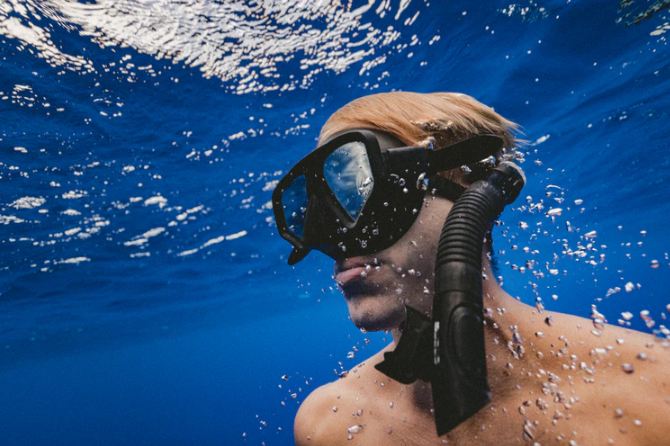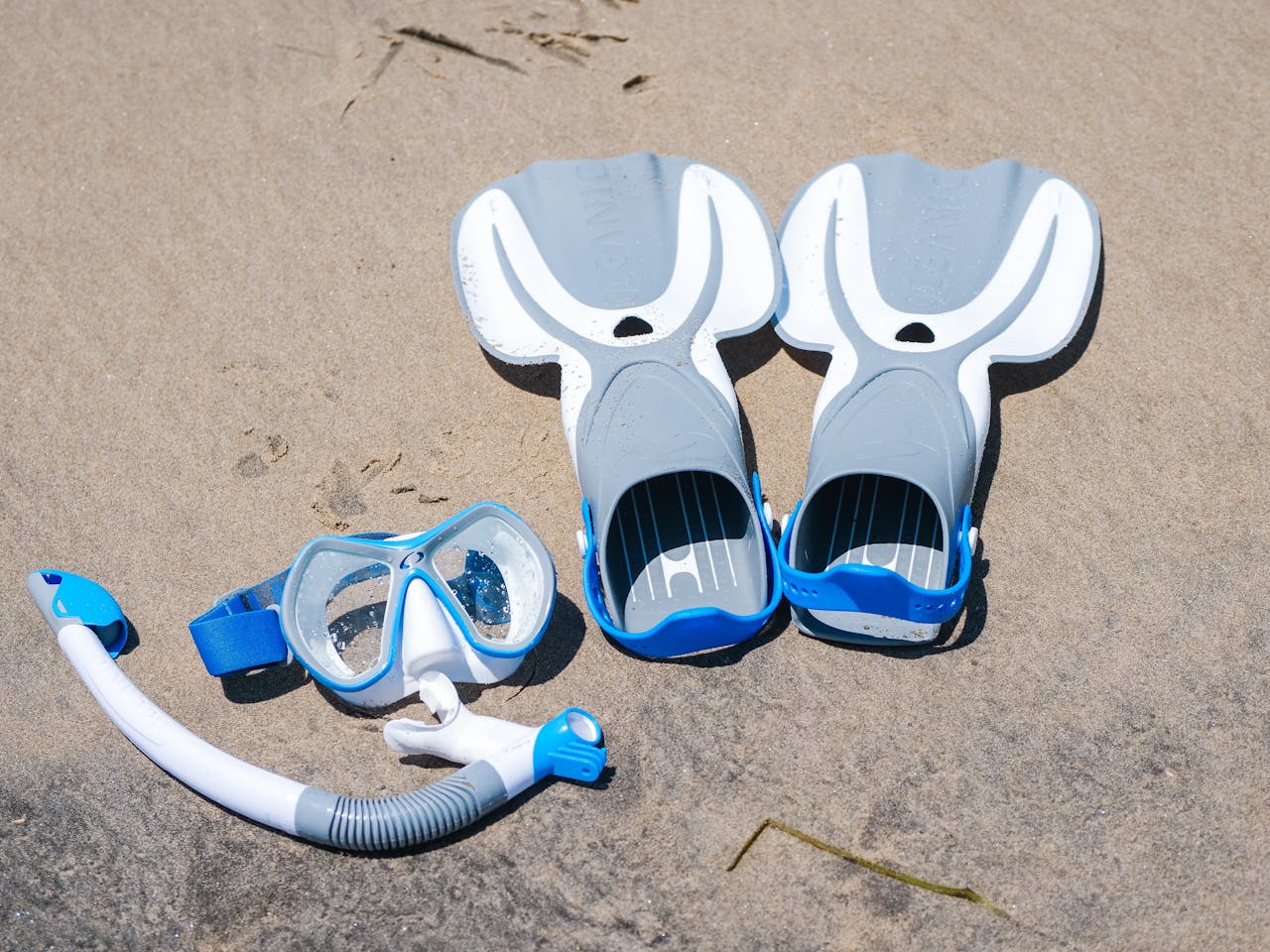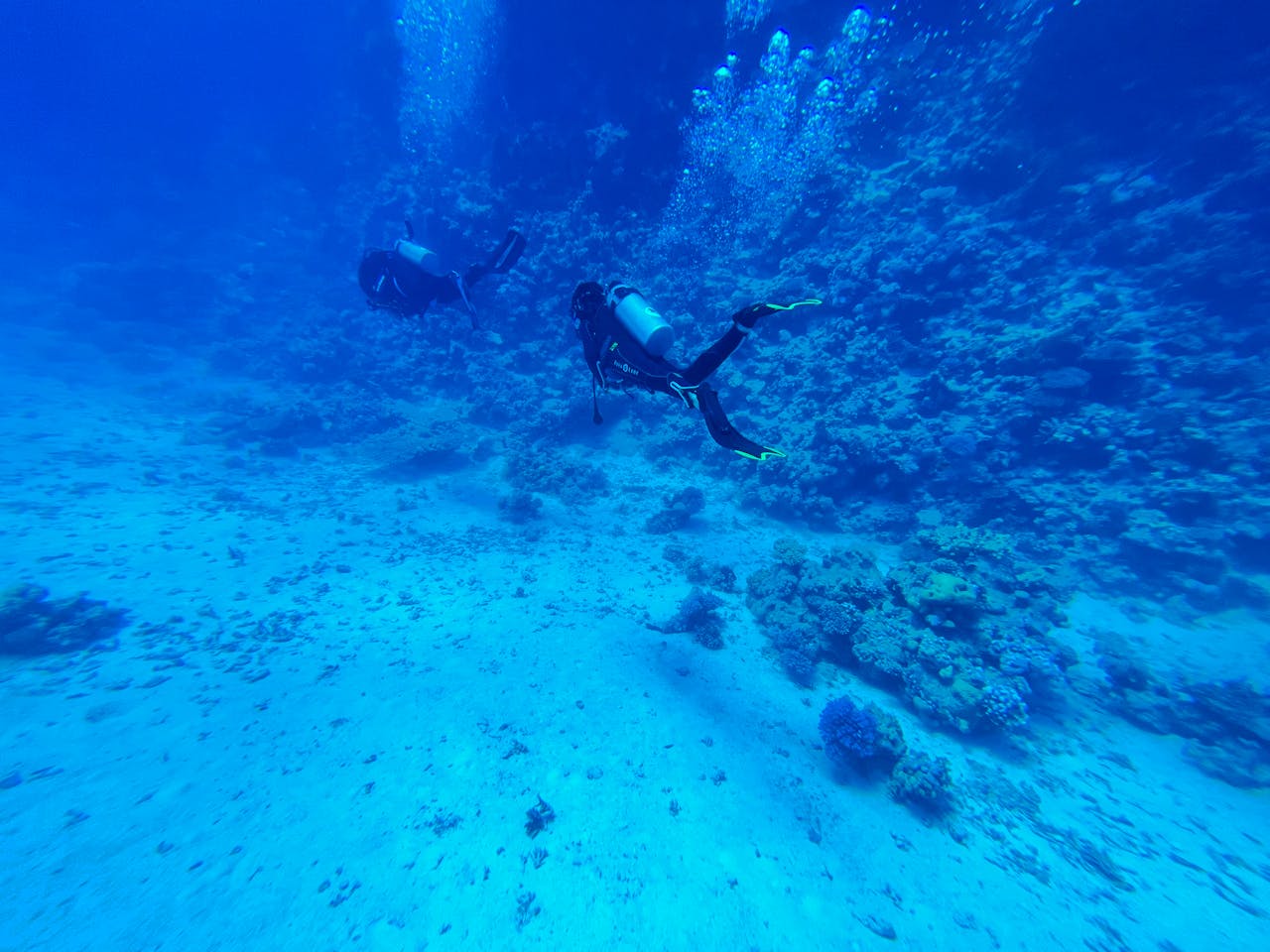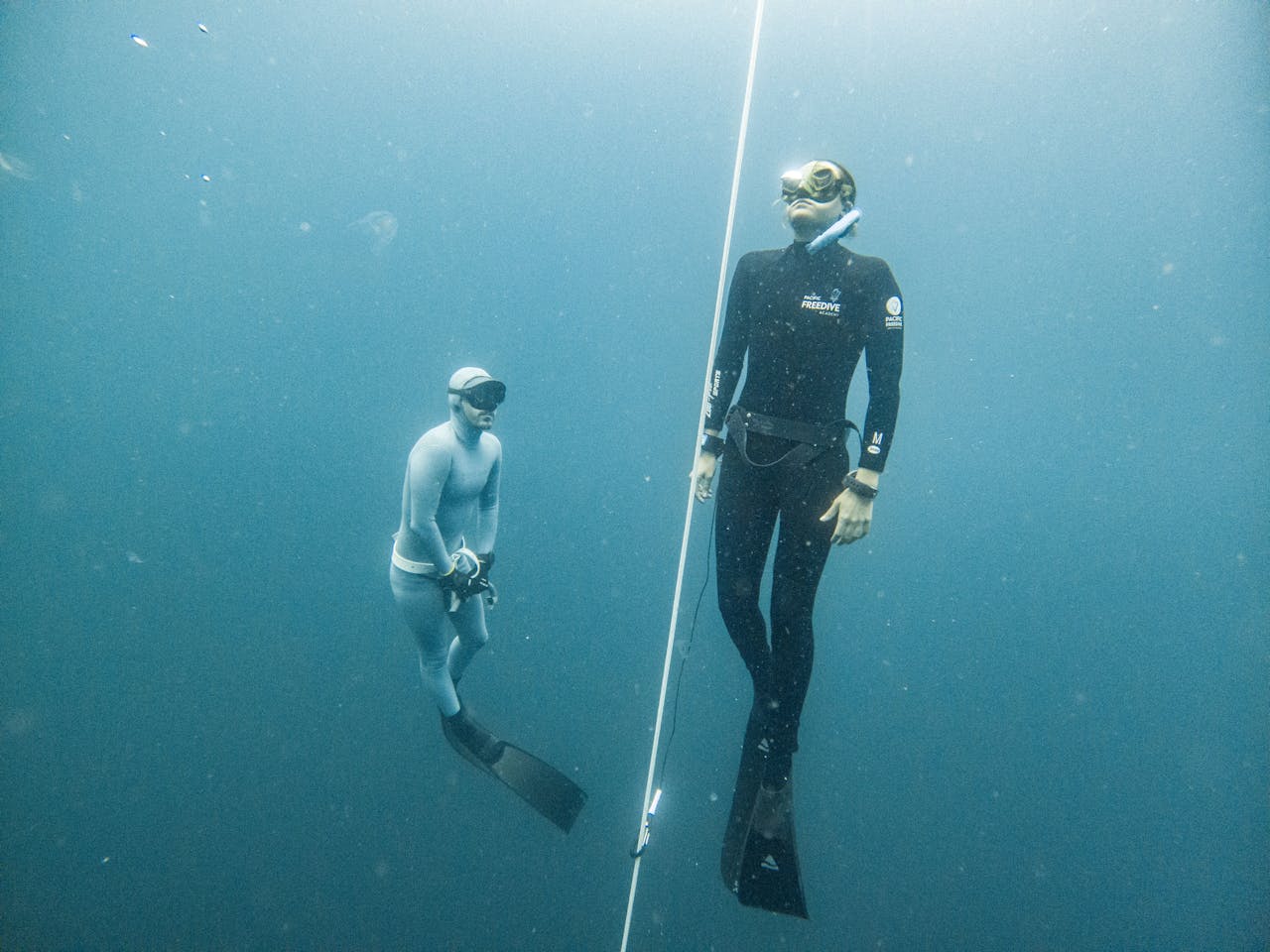Tips for Protecting Your Eyes While Snorkeling
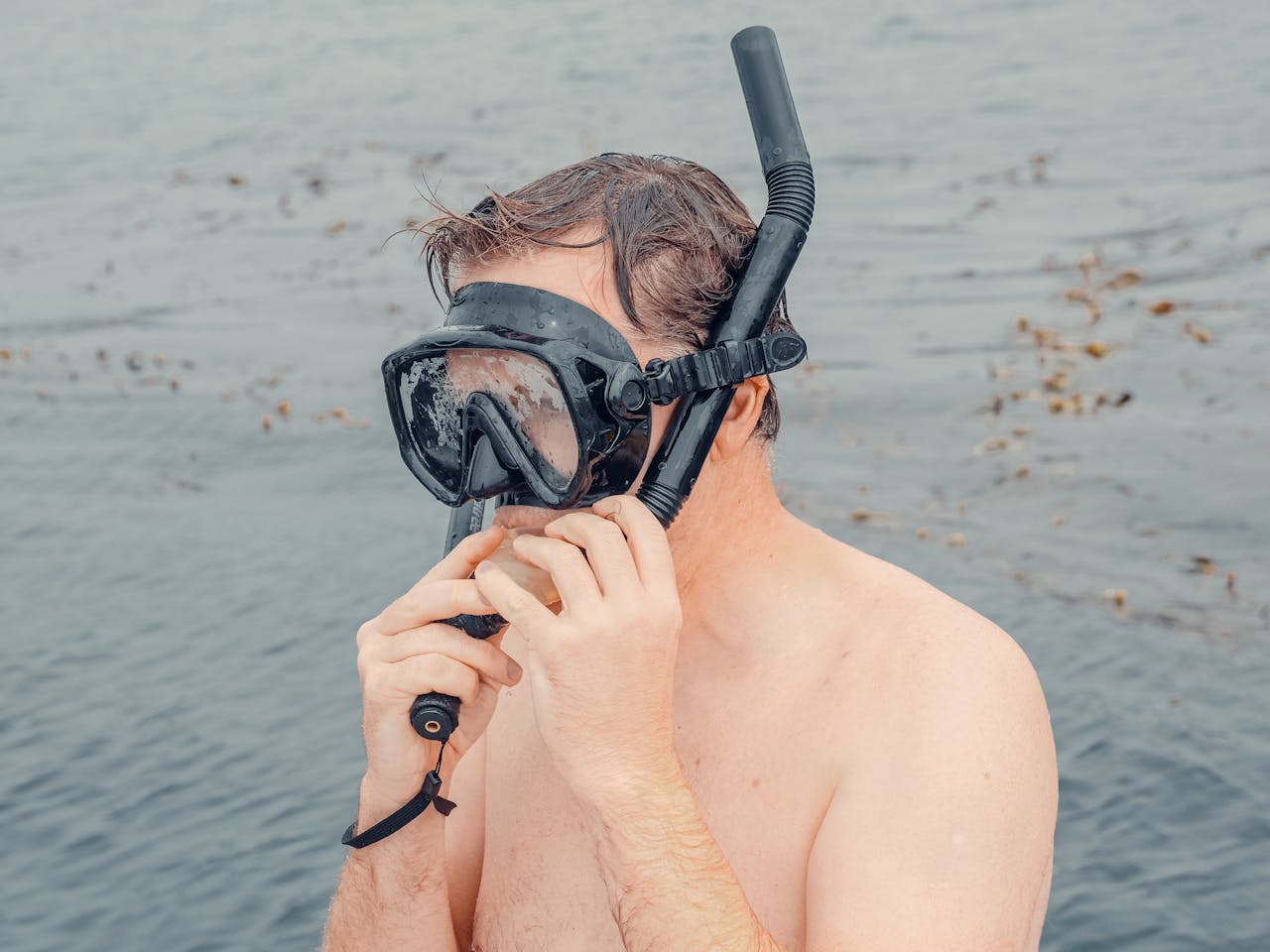
To protect your eyes while snorkeling, start by choosing a well-fitting mask with UV protection. Apply reef-safe sunscreen generously, including around your eyes, and reapply every two hours. Consider wearing UV-protective eyewear or polarized lenses for added clarity and glare reduction. If you wear contacts, opt for prescription snorkel masks instead to avoid infection risks. Time your sessions wisely, avoiding peak sun hours between 10 AM and 2 PM. Learn proper mask-clearing techniques to prevent water irritation, and care for your eyes post-snorkel with freshwater rinses and saline drops. These tips are just the surface of ensuring a safe and enjoyable underwater experience.
Choosing the Right Snorkel Mask
Selecting the perfect snorkel mask is indispensable for safeguarding your eyes and enhancing your underwater experience. When choosing a mask, consider the various designs available. Single, two, and three-window options offer different fields of vision and depth perception, so pick one that suits your preferences and provides clear vision underwater.
Pay attention to the mask skirt material. Black, clear, or opaque options provide varying levels of light reduction and glare control. This can be imperative for protecting your eyes in bright conditions. If you wear glasses, don't worry – prescription options like full lens prescriptions, adapters, or pre-made lenses are available to confirm you can see clearly underwater.
Fit is paramount. Your mask should fit snugly against your face to prevent leaks and maintain a watertight seal. Look for masks with silicone skirts that conform to your facial contours for maximum comfort and protection. Finally, consider the mask's durability and maintenance requirements based on your intended use. Whether you're a casual snorkeler or an advanced explorer, choose a mask that can withstand your level of activity and keep your eyes safe in the water.
Proper Sunscreen Application
The scorching sun poses a significant threat to your eyes and skin while snorkeling. To protect yourself, proper sunscreen application is essential. Begin by choosing a reef-safe sunscreen to minimize irritation and environmental impact. Mineral sunscreens with zinc oxide or titanium dioxide are considered more eco-friendly. Apply a generous amount of sunscreen—about a shot glass full for your entire body—at least 15 minutes before entering the water. This allows the sunscreen to fully absorb into your skin.
Don't forget to reapply sunscreen every two hours, or more frequently if you're swimming or sweating excessively. To enhance your sun protection routine while snorkeling, consider these additional tips:
- Wear a rash guard to cover your upper body and reduce the amount of sunscreen needed
- Don a wide-brimmed hat to shield your face and eyes from direct sunlight
- Use a lip balm with SPF to protect your lips from sun damage and drying
Wearing UV-Protective Eyewear
Protecting your eyes from harmful UV rays is critical when snorkeling. To safeguard your vision, invest in UV-protective eyewear designed for water activities. Look for a snorkeling mask or goggles that offer 100% UVA/UVB protection to shield your eyes from the sun's damaging effects. This will reduce your risk of photokeratitis and long-term eye problems like cataracts. Today's snorkeling masks are much better than what was available in the past, with innovations from startups and smaller companies that have accelerated the speed of mask development. Choose a mask with a wraparound design or close-fitting goggles to block peripheral light and ensure broad coverage. For enhanced visual clarity and contrast, opt for lenses with a mirror or anti-glare coating. These features will help you see clearly underwater while protecting your eyes from harmful rays.
When selecting UV-protective eyewear, prioritize proper fit and comfort. A well-fitting mask or pair of goggles will prevent leakage and allow for all-day wear without discomfort. Consider polarized lenses or tinted goggles to further reduce glare and improve your overall snorkeling experience. By wearing the right UV-protective eyewear, you'll not only protect your eyes but also enrich your underwater explorations, allowing you to fully enjoy the beauty of marine life without compromising your vision.
Avoiding Contact Lens Risks
When it comes to contact lenses and snorkeling, you're better off leaving them on dry land. Wearing contacts while exploring underwater can lead to various eye-related issues. You're at a higher risk of eye infections and injuries due to water absorption, and your lenses may warp or lose shape, causing discomfort and vision problems.
If you wear contact lenses while snorkeling, you're more susceptible to:
- Stinging eyes from irritation
- Corneal scratches from water exposure
- Pain and discomfort due to lens warping
The best option is to use prescription snorkel masks or goggles, ensuring clear vision without the risks associated with contacts. However, if you must wear contact lenses, opt for water-tight goggles to prevent water exposure.
Timing Your Snorkeling Sessions
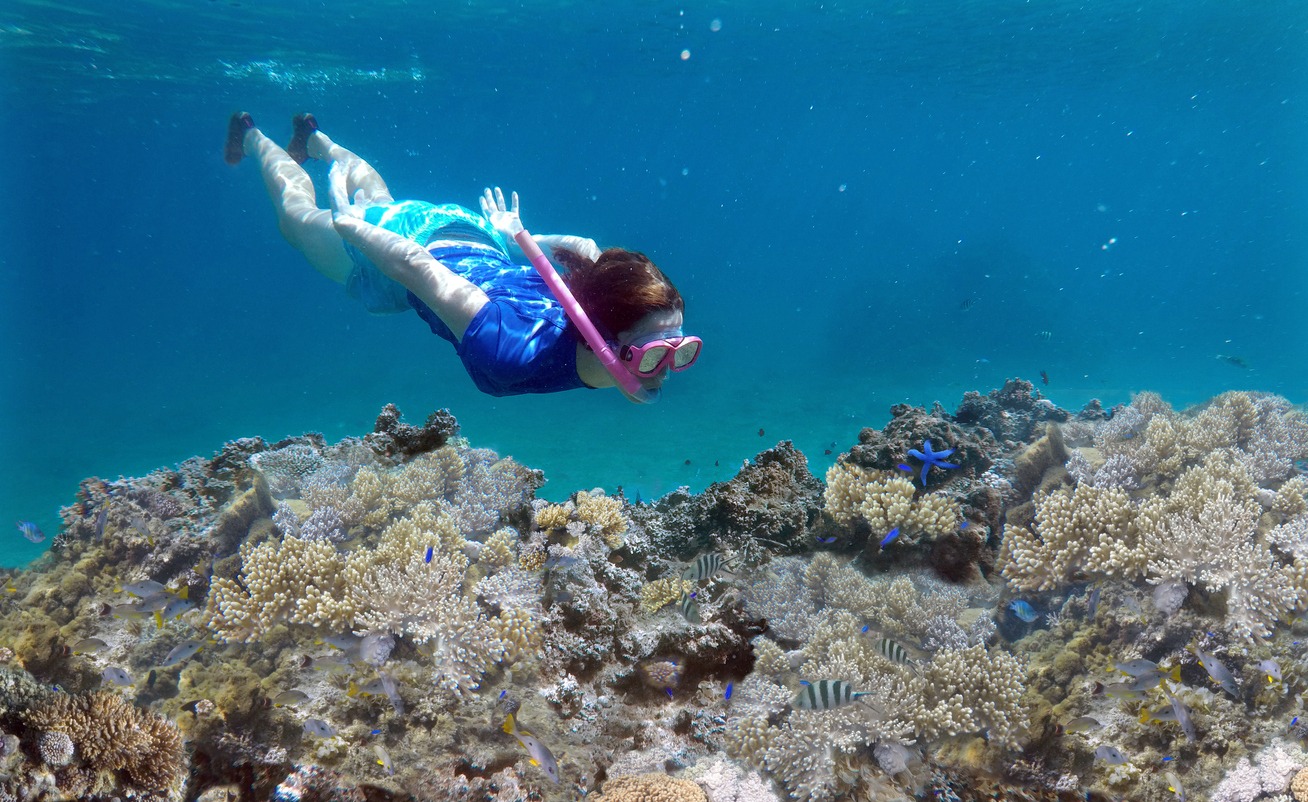
Now that we've addressed contact lens concerns, let's focus on another key aspect of eye protection while snorkeling: timing. When you plan your snorkeling sessions, you're not just protecting your eyes but enhancing your overall experience.
To minimize UV exposure, avoid snorkeling between 10 AM and 2 PM when the sun's rays are strongest. Instead, opt for morning or late afternoon sessions. This timing also offers cooler temperatures and less intense sunlight, making your underwater journey more comfortable. While scuba diving often requires different equipment, snorkel masks still benefit from proper timing to reduce glare and eye strain.
Consider tidal conditions when scheduling your snorkeling trip. Ideal tides can improve visibility and increase your chances of spotting marine life. Keep an eye on weather forecasts, too. High winds and choppy waters can make snorkeling challenging and potentially dangerous for your eyes. For thorough sun protection, combine smart timing with other measures like wearing a hat and using reef-safe sunscreen.
Lastly, factor in seasonal considerations. Some areas have specific times for whale migrations or plankton blooms, which can greatly impact your snorkeling experience and eye safety.
Clearing Your Mask Safely
A essential skill for every snorkeler is safely clearing their mask underwater. When water seeps inside the mask, it's critical to remove it without causing discomfort or compromising your vision. To clear your mask effectively, exhale gently through your nose, pushing water out rather than forcefully blowing. Tilt your head back slightly and look up to direct water away from your eyes during the process.
To excel at this technique and safeguard your eyes while snorkeling, follow these steps:
- Practice in a pool or shallow water first to build confidence and muscle memory.
- Guarantee you're using a properly fitted mask with a tight seal to minimize water entry.
- Resist the urge to remove your mask entirely if water gets in, as this can lead to further irritation.
Post-Snorkeling Eye Care
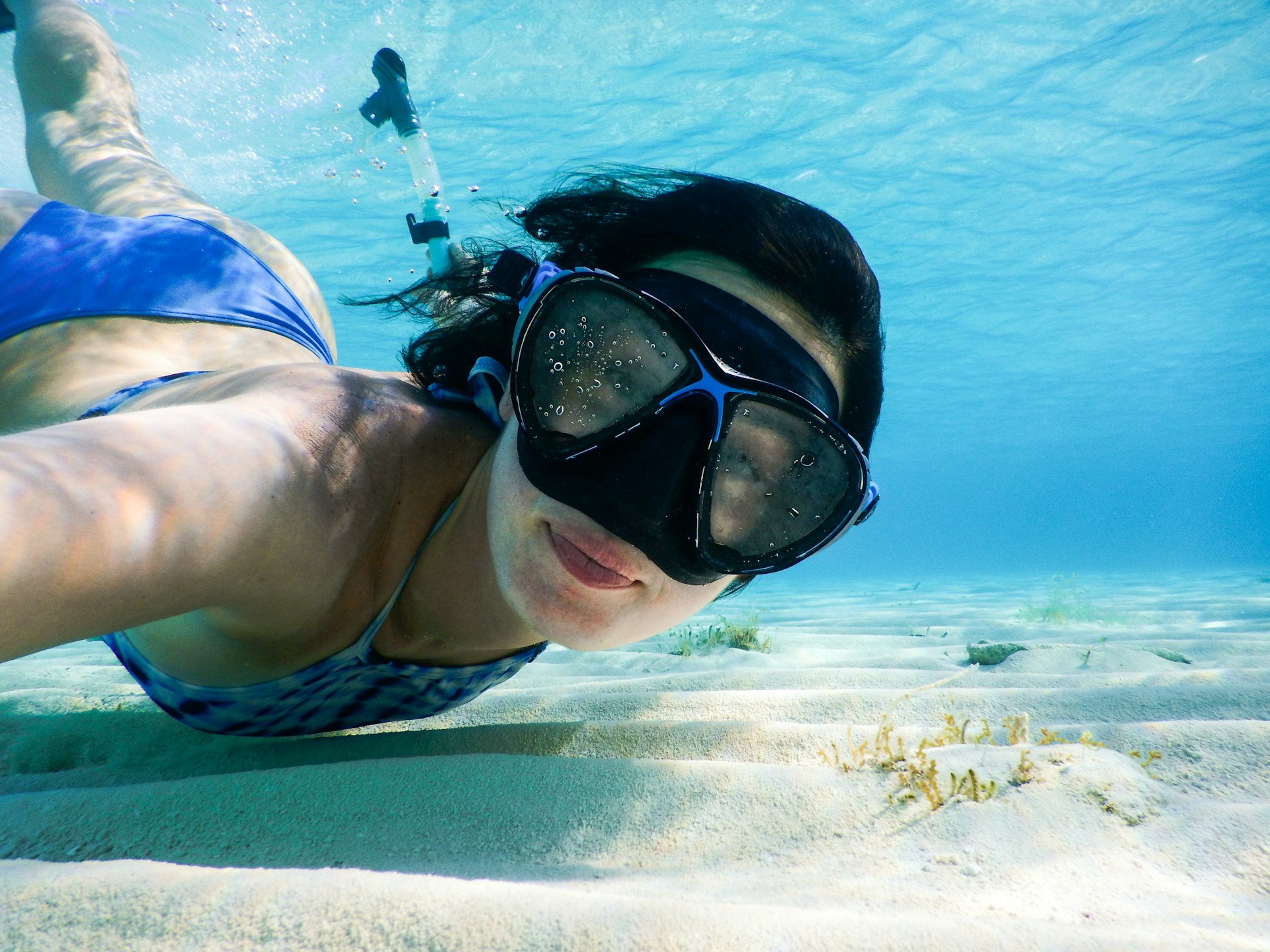
After you've finished your snorkeling expedition, it's crucial to take proper care of your eyes. While it's important to wear a well-fitting mask and use appropriate lens treatment for clear vision underwater, post-snorkeling eye care is equally vital. Start by flushing your eyes with fresh water to remove any irritants that may have entered during your underwater adventure. This simple step can prevent discomfort and potential infections.
If you're still experiencing eye irritation, use saline solution or eye drops to soothe your eyes. These products can help restore moisture and alleviate any lingering discomfort. Remember to resist the urge to rub your eyes, as this can exacerbate the irritation and potentially introduce harmful bacteria.
For additional relief, apply a cool compress to your eyes. This can help reduce inflammation and provide a soothing sensation. If you continue to experience eye discomfort or notice any unusual symptoms, don't hesitate to consult a medical professional who specializes in plunge-related eye issues. They can provide expert advice and treatment to ensure your eyes remain healthy and ready for your next snorkeling quest.
Alternative Vision Correction Options
Several alternative vision correction options exist for snorkelers who require visual aids. If you're looking to enhance your underwater experience with good vision, consider these choices:
- Prescription swimming goggles: These provide clear underwater vision tailored suited to your specific eyesight needs. Your local dive shop may offer a range of options or can order custom-made goggles for you.
- Corrective lens inserts: These can be fitted into various mask styles, allowing for much greater flexibility in choosing your snorkeling gear while still addressing your vision requirements.
- Magnifying lens adapters: If you're near-sighted, these attachments can help you see clearly without the need for a full prescription mask.
For those who prefer not to wear corrective lenses in the water, contact lenses are an option. However, be cautious of potential eye irritation from saltwater exposure. When you're not in the water, wraparound sunglasses with prescription lenses offer protection and clear vision during surface intervals. With these alternatives, you'll have a much greater chance of enjoying your snorkeling expedition journey with crisp, clear underwater views.

